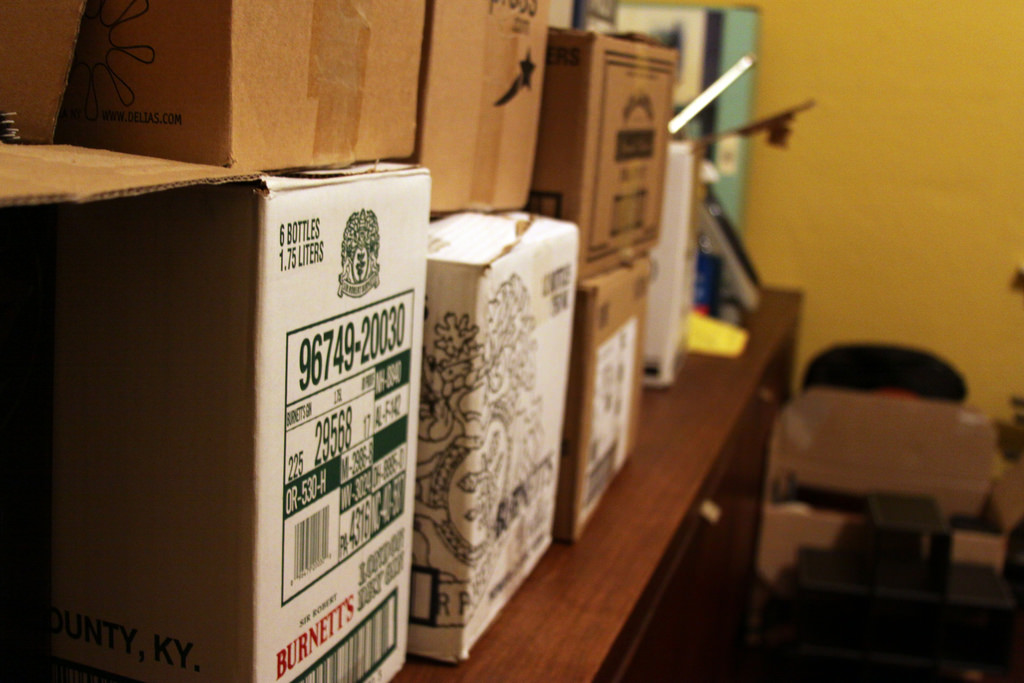Getting things packed up for a move? You might think packing involved putting things in a box and closing it. That method works, but it can make unpacking a nightmare and lead to more than one broken item.
Use these instructions from local movers in Seattle to pack your items for safe transport and to make unpacking as easy as possible.
#1 Sort items by destination, size, and weight.
To make unpacking easier, it’s best to group items by their planned destination in your new home. Then, sort by size and weight. Packing similar items together makes the most use of the box.
Start packing lesser-used items first. Leave more commonly used items for the week of moving, with the essential items packed the day before or day of the move.
#2 Choose the right box.
You can do this by knowing what size and types of moving boxes to use, which varies on what you are packing.
Box Sizes
- 1.5 cubic foot – ideal for kitchen items and books, but works well for other small appliances and blankets as filler
- 3.0 cubic foot – for clothing, cookware (such as pots, pans, baking pans, etc.), and larger electronics
- 4.5 cubic foot – larger kitchen appliances that do not already have boxes will work well in this size, also bed linens and small lamps
- 6.0 or 6.1 cubic foot – for clothing, thick blankets, cushions, or other bulky (but lightweight) items

Box Styles
- Wardrobe boxes – You will want one that is upright and has a bar to pack anything that you do not want to have to lay flat. While they are suitable for dresses, suits, and other closet clothing, the larger boxes are perfect for wind chimes or chandeliers that will tangle if laid flat or left loose. Wardrobe boxes also look like a dresser drawer, making moving clothes from drawers to boxes a breeze.
- Mirror boxes – If you have artwork, mirrors, or any framed picture with glass in it, you will want to wrap them in bubble wrap and use these specific boxes for safe transportation. They do not handle a lot of weight, so pack lightly.
- Dish packs – These are special boxes that can handle drinking glasses and glass bottles of various sizes.
- Mattress boxes – Only necessary if you worry about your mattress getting punctured in a move or you are planning to store it for a while following a move.
#3 Create a cushion.
When packing a box, you want to create a cushion to prevent items from breaking during the move. Adding a layer of packing peanuts or crumpled paper is one way to do this.
If you are packing non-breakable items, like books or linens, adding a cushion layer is not necessary.
#4 Wrap items in bubble wrap.
Keep breakable items safe by wrapping them in bubble wrap. As you set them inside the box, make sure to add packing peanuts or crumpled paper in empty spots to prevent items from moving around.
#5 Place heavier items at the bottom, lighter at the top.
If you are packing several items into a single box, place heavier items on the bottom. Then, add lighter items on top. The heavier weight on the bottom helps keep the box stable and prevents it from toppling over.

#6 Keep the weight below 30 pounds.
Try to keep each box’s weight below 30 pounds if possible. This ensures that each box is easy to lift and that it won’t collapse under its own weight.
#7 Add packing material to the top.
Once you’ve finished putting items into a box, add packing material into any empty spaces, finishing with a layer on top. Filling the box helps protect its contents and keeps the box stable during the move.
#8 Tape up the box.
Use packing tape to close the box and secure its contents. Add a couple of strips down the seam.
For easier opening, you can place a string under the tape, leaving a piece hanging down one side. When you are ready to open the box, just grab the string and pull.
#9 Label and color code the box.
Give a brief description of its contents (Christmas decor, bathroom linens, etc.). Use colored tape to designate the box’s destination at your new place (red for living room, blue for kitchen, etc.)
At your new place, before the movers arrive, put up signs showing which color goes to which room. The movers will just need to look at the color and find the right room.
These guidelines will help you pack your home quickly and efficiently. They will allow you to secure your items, keeping them safe. Then, they will make the unpacking process easier to complete. What other packing tips do you intend to use in your move?